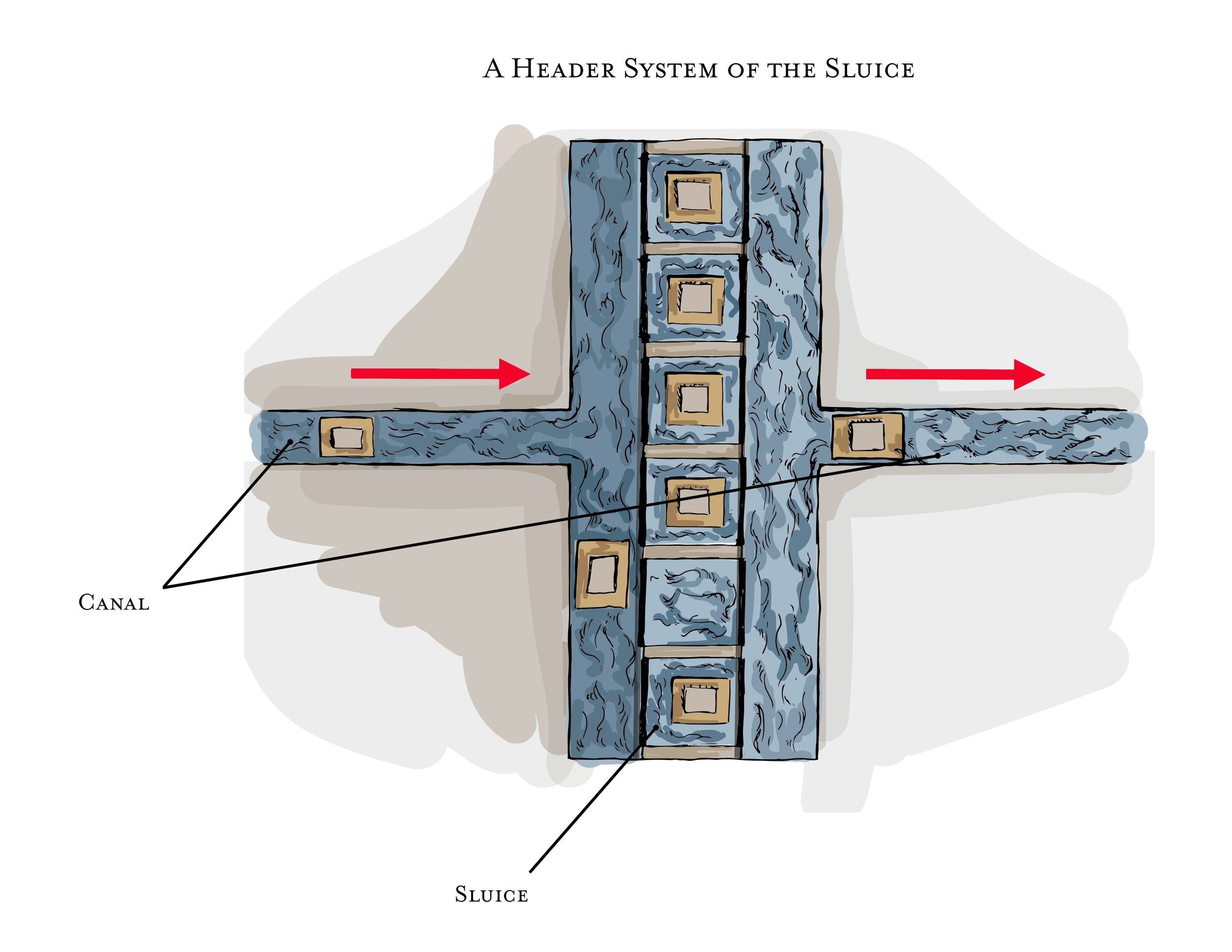MARCH 2021
Please download the full brochure Pharaoh's Secrets of the Pyramids for all details and mathematical equations outlining my theory of Pyramid Construction.
The Great Pyramid consisted of 216 layers of stone blocks, which included approximately 2,300,000 core stone blocks and approximately 200,000 casing stone blocks. The pyramid base was 230 m x 230 m (756 ft x 756 ft). Stone blocks on the lower layers were typically larger than stone blocks on the higher layers. Core stone blocks were quarried approximately 400 m (1,312 ft) south of the pyramid, and the casing stones, made of white Tura limestone, were quarried on the eastern shores of the Nile. The King's Chamber stones were rose granite from Aswan, approximately 900 km (560 miles) from the Great Pyramid. The average size and weight of the core stones were 1.27 m x 1.27 m x .69 m (50" x 50" x 27"), with an average density of 2.6g/cm3 (150lb/ft3) and 2,500 kg (5,511 lbs) per stone block. The King's Chamber stone blocks weighed 50,000 - 60,000 kg (110,000 to 132,000 lbs).
Wooden barges transported stone blocks via canal from the river or quarry to the pyramid. The canal at the base of the pyramid was at a higher elevation than the canal used to transport building materials from the river or quarry. To overcome the terrain change, the Egyptians used a Header System of sluices to elevate the wooden barges in the transport canal to the canal around the pyramid’s perimeter. Sluices were also used to navigate the change in elevation on the pyramid itself as it was being constructed. Stone blocks traveled up the pyramid layers by way of sluices, two layers or 1.37m (54 inches) at a time. The pyramid is made of 216 layers. As a result, 108 sluice levels would have been required to complete construction. I estimate it would require 4 minutes and 6,700 liters (1,770 gals.) of water to move each stone block through one sluice level. The water must be lifted to the highest sluice level and released to the lower sluice level to lift the next barge. The same water will lift 20 more barges in the lower sluice levels. Working three 8-hour shifts each day, 7 days a week, it would take 365 days to move 1,839,600 stone blocks.
A shaduf was used to lift water to the highest sluice level on the pyramid. A shaduf is a long pole balanced on a crossbeam, with one arm extending farther from the crossbeam than the other. A bucket and rope are attached to the long arm, and a counterweight is attached to the short arm. The counterweight is used to offset the weight of water being lifted by the bucket. When a shaduf is appropriately balanced, a worker can lift a 19-liter (5 gals.) water bucket using one arm. Every fifth layer of the pyramid had a shaduf installed, with one worker operating each shaduf. A second worker was used to unhook the full bucket of water from the lower shaduf and hook that bucket to the higher shaduf. These shadufs transported full buckets of water from the pyramid's base to the highest sluice, moving buckets of water from one shaduf to the next. Each shaduf level could have been operated by one worker, significantly reducing the number of workers needed to build the pyramid. My mathematical equations in the PDF version of Project One outline the total number of workers needed if one worker operated each shaduf or two workers operated each.
First Year of the Pyramid
During the first year of construction, the fortieth layer, including the Queen's Chamber and a portion of the Grand Gallery, would be complete. There were twenty sluice lines; fourteen were used full-time, four for raising lines, and two for lifting the large stones required for the chambers. With the increasing height of the pyramid and each layer's surface area decreasing in size, the quantity of sluice lines has to be reduced. Fourteen sluice lines were required up to the fortieth layer and reduced to six sluice lines by the 120th layer. As construction progressed, the sluice lines would be reduced from fourteen to twelve, to ten, to eight, to six, to four, and finally to two. I assume, on average, six sluice lines would be in operation during the second year of construction, and based on that, I can calculate the number of stones moved in year two.
Each sluice level will require two workers to operate the two levers that open and close the sluice gate. To raise the gate, the short pole of a lever will hook onto each side of the sluice gate, providing enough force to raise the gate with 2.74 m (9.0 ft.) of water pressure. Though two workers and two levers were needed to open and close the sluice gates, the sluice sequence shows one lever only for clarity of the picture in the video demonstrations.
The same two workers then move the barge from one sluice to the next one. With fourteen sluice lines, it will require 1,680 workers daily to operate sluice gates and move the barges from one sluice to the next one. My example verifies the number of stones raised into place on the pyramid using 20 sluice lines and the number of workers needed to operate the shaduf and sluice lines.
In conclusion, it would be possible to construct the pyramid in two years. However, due to the seasonal availability of workers, weather, and other variables, constructing the pyramid probably required more than two years.
All details and support documenting my theory are outlined in the full brochure available for download.
Thomas Engstrand AIA, an architect licensed in the United States with 40 years of experience, provided technical assistance.






